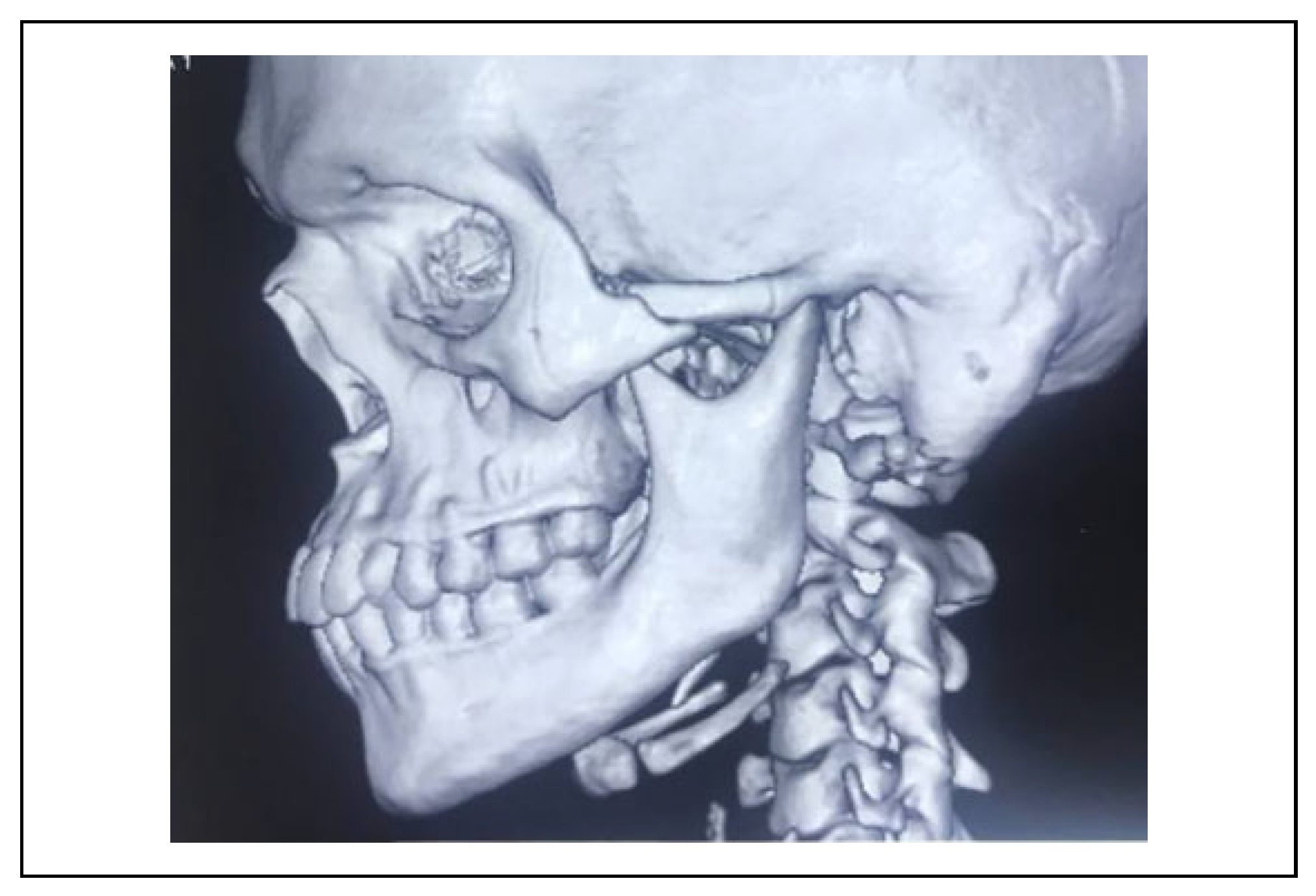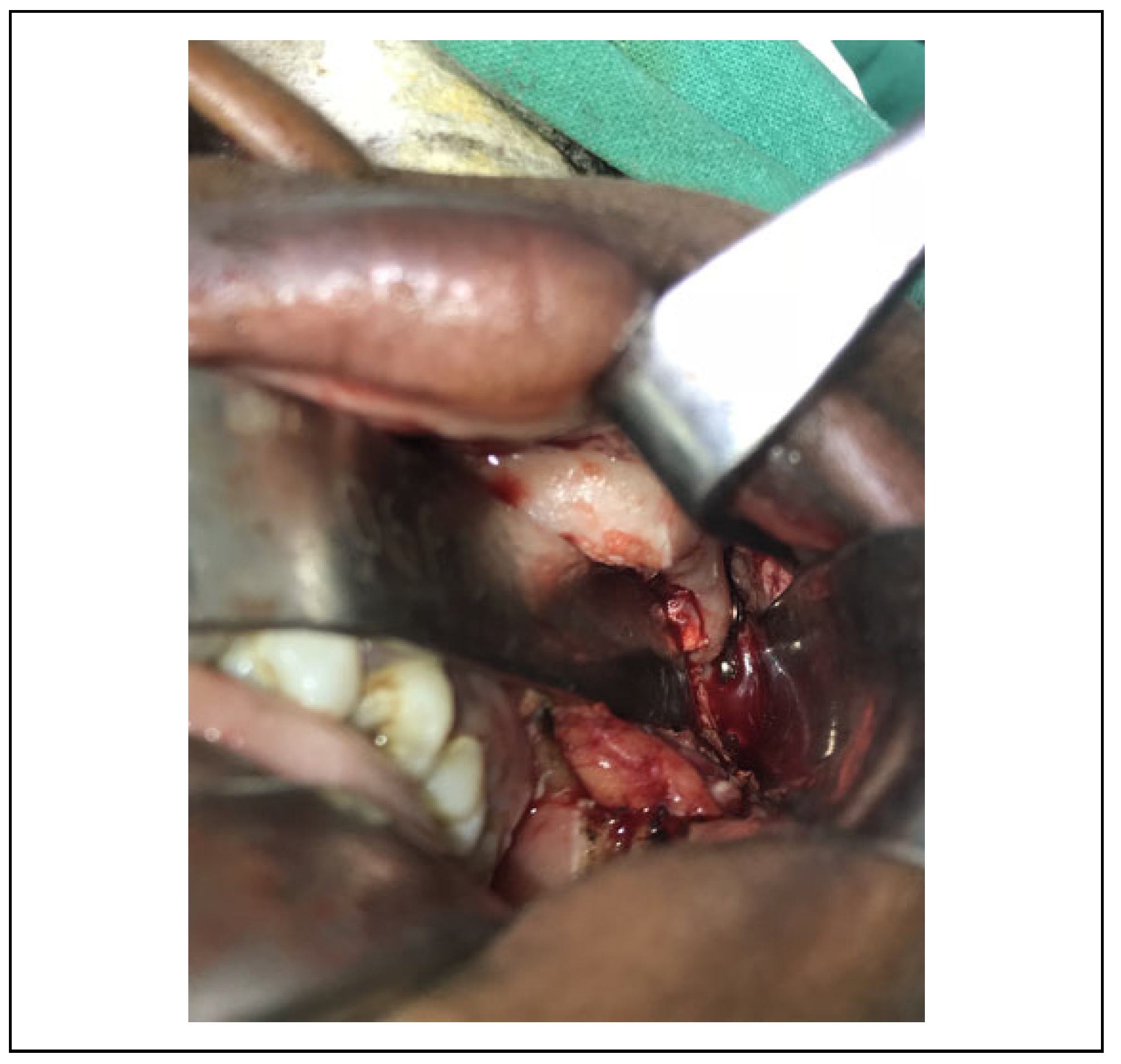Management of Zygomatic Arch Fractures by Intraoral Open Reduction and Transbuccal Fixation: A Technical Note
Abstract
:Introduction
Technique
Discussion
Author’s Approach Versus Conventional Approaches
Conclusion
Funding
Patient Consent
Conflicts of Interest
References
- Chen, C.T.; Lai, J.P.; Chen, Y.R.; Tung, T.C.; Chen, Z.C.; Rohrich, R.J. Application of endoscope in zygomatic fracture repair. Br J Plast Surg. 2000, 53, 100–105. [Google Scholar] [PubMed]
- Shikimori, M.; Motegi, K. Skin incision parallel with skin cleavage lines for access to the fractured zygomatic arch. J Maxillofac Surg. 1986, 14, 321–322. [Google Scholar]
- Lee, C.H.; Lee, C.; Trabulsy, P.P.; Alexander, J.T.; Lee, K. A cada- veric and clinical evaluation of endoscopically assisted zygo- matic fracture repair. Plast Reconstr Surg. 1998, 101, 333–345. [Google Scholar] [PubMed]
- Xie, L.; Shao, Y.; Hu, Y.; Li, H.; Gao, L.; Hu, H. Modification of surgical technique in isolated zygomatic arch fracture repair: seven case studies. Int J Oral Maxillofac Surg. 2009, 38, 1096–1100. [Google Scholar] [PubMed]
- Badillo, O.; Osben, R.; Vidal, C.; Duarte, V. Design and use of an instrument for video-assisted surgical treatment of unstable fractures of the zygomatic arch: the Z instrument. Br J Oral Maxillofac Surg. 2015, 53, 767–768. [Google Scholar] [CrossRef] [PubMed]
- Dahlke, E.; Murray, C.A. Facial nerve danger zone in dermato- logic surgery: temporal branch. J Cutan Med Surg. 2011, 15, 84–86. [Google Scholar] [PubMed]




Disclaimer/Publisher’s Note: The statements, opinions and data contained in all publications are solely those of the individual author(s) and contributor(s) and not of MDPI and/or the editor(s). MDPI and/or the editor(s) disclaim responsibility for any injury to people or property resulting from any ideas, methods, instructions or products referred to in the content. |
© 2020 by the author. The Author(s) 2020.
Share and Cite
Panneerselvam, E.; Balasubramanian, S.; Kempraj, J.; Babu, V.R.; Raja, V.B.K.K. Management of Zygomatic Arch Fractures by Intraoral Open Reduction and Transbuccal Fixation: A Technical Note. Craniomaxillofac. Trauma Reconstr. 2020, 13, 130-132. https://doi.org/10.1177/1943387520911866
Panneerselvam E, Balasubramanian S, Kempraj J, Babu VR, Raja VBKK. Management of Zygomatic Arch Fractures by Intraoral Open Reduction and Transbuccal Fixation: A Technical Note. Craniomaxillofacial Trauma & Reconstruction. 2020; 13(2):130-132. https://doi.org/10.1177/1943387520911866
Chicago/Turabian StylePanneerselvam, Elavenil, Sasikala Balasubramanian, Jaghandeep Kempraj, Vijitha Ravindira Babu, and V. B. Krishna Kumar Raja. 2020. "Management of Zygomatic Arch Fractures by Intraoral Open Reduction and Transbuccal Fixation: A Technical Note" Craniomaxillofacial Trauma & Reconstruction 13, no. 2: 130-132. https://doi.org/10.1177/1943387520911866
APA StylePanneerselvam, E., Balasubramanian, S., Kempraj, J., Babu, V. R., & Raja, V. B. K. K. (2020). Management of Zygomatic Arch Fractures by Intraoral Open Reduction and Transbuccal Fixation: A Technical Note. Craniomaxillofacial Trauma & Reconstruction, 13(2), 130-132. https://doi.org/10.1177/1943387520911866


